Introduction to Spanish Dog Breed
According to the Spanish Royal Canine Society, just half of the country’s native dog breeds are recognized by international kennel clubs. Some of them are so rare that they aren’t even widely available in Spain. The dogs of Spain had many uses, including guarding livestock, herding animals, and hunting.
Spanish breeds are just as beautiful as any other in the world, but they are less popular because of the popularity of other kinds. But, as you’ll see in a bit, it’s worth your time to learn about Spanish breeds.
Spanish Alano Espaol
The history of this Spanish dog breed is lengthy and interesting. Originally from Iran, the Alani eventually settled in what is now Spain in about the fifth century AD. Their forefathers probably helped the Alani by protecting livestock and leading pursuits.
The Alano breed, however, became well-known in bullfighting and the occasional boar hunting expedition after more than a millennium and a few centuries. The Spanish Alano immediately reveals the reason why.
They have massive, imposing heads and equally imposing demeanors. Although the Alano’s popularity has declined since its heyday in bullfighting, it is still a breed to admire.
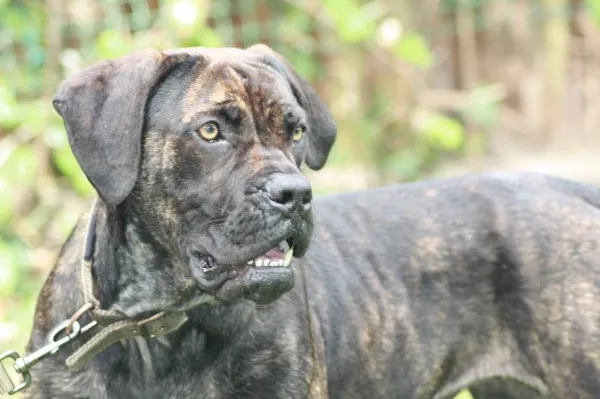
Image Credit- Getty Images
Andalusian Hound Maneto
Another Spanish dog breed with a hunting background, the Andalusian Hound Manteno, was developed specifically for pursuing rabbits. The petite size, short legs, and nimble body of these dogs make them a popular pet choice.
However, hunting dogs thrive in low-vegetation environments (due to their little legs). The dogs of Andalusia are known for their sociability and energy. The Royal Canine Society of Spain has officially recognized this breed.

Image Credit- Getty Images
Basque Shepherd Dog
The Basque Shepherd is a native of the Basque region of Spain and is, therefore, a landrace dog. For many years, these hardy canines helped local shepherds watch after livestock and herd sheep and calves.
Although the Basque Shepherd dog has been present for thousands of years, it was first classified alongside the Catalan Sheepdog and the Pyrenean Shepherd because of their shared ancestry. This breed was not officially recognized in Spain until 1996 by the Royal Canine Society.
There are two types of Basque Shepherds, one with a smooth coat and one with a rough coat. However, the smooth-haired variety is believed to be more “purebred” and more extroverted. On the other hand, the rough coat is often smaller and has a coarser coat.

Image Credit- Getty Images
Bichon Frise
The origin of the Bichon Frise, which some people think originated in the Caribbean, is actually Tenerife. The forebears of the breed were so well-liked by the island’s sailors that they were formerly known as the Bichon Tenerife. It is reported that King Henry III of England was so attached to the beloved Bichons that he carried them around in a basket slung around his neck.
When the breed lost favor with the upper class in the late 1800s, many of them joined the circus as performers thanks to their intelligence, agility, and cuteness. The cuteness of their little black button noses and their sunny personalities ensure that they remain popular pets even today.
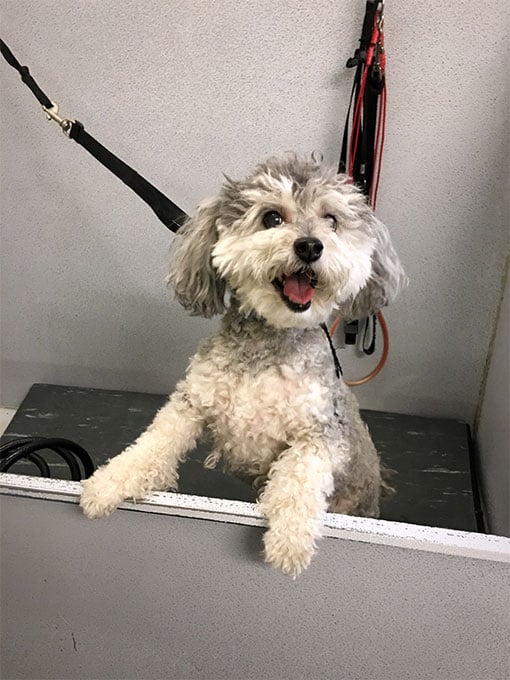
Image Credit- Getty Images
Catalan sheepdog
The Catalan Sheepdog is a Spanish dog breed that was developed to protect and herd sheep in the beautiful Pyrenees Mountains. These dogs are among the world’s oldest, with a history that may reach back to the Roman Empire.
Due to their brave and friendly personalities, these dogs are more popular in modern family homes when they are not working as livestock guardians or herders. However, it is important to remember that their protective instincts may cause them to be timid or even hostile toward strangers.
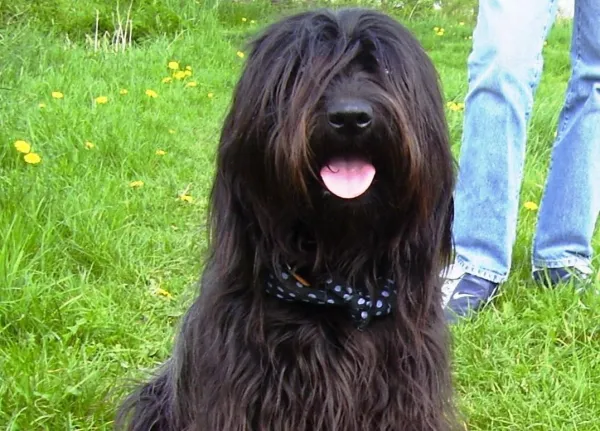
Image Credit- Getty Images
Ca De Bou
The Ca de Bou is an ancient Spanish dog breed. The name “Mallorca Dogue” is another common moniker for this dog. The FCI officially recognizes this breed and places it in Group 2. (Great Dane-type dogs).
The Ca de Bou is a happy, affectionate dog despite its gloomy history. The animals serve as trusted guardians. However, they also make wonderful pets for families.
Short and sleek describes the Ca de Bou’s coat. The Ca de Bou are generally warm and welcoming people. It is recommended that the dogs be fostered because of their high intelligence.
They also require frequent movement and exercise. This is crucial to ensure the dogs’ mental and physical well-being by preventing them from being bored or under-challenged. The Ca de Bou forms an extremely strong bond with its master and proves to be a devoted friend.
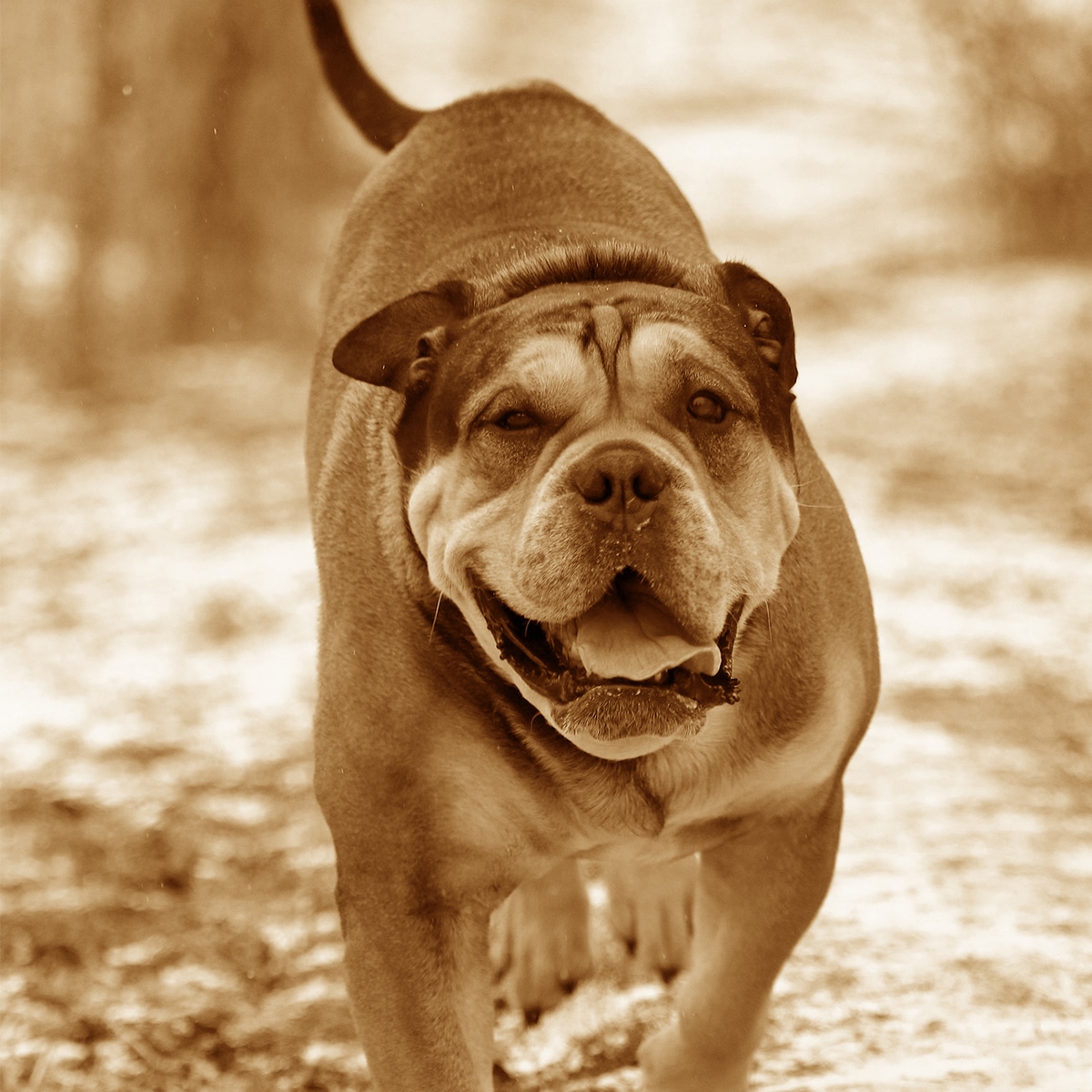
Image Credit- Getty Images
Can De Palleiro
Extremely rare even in its native Spain, the Can de Palleiro gets its name from the haystacks in which the dogs were once kept.
The Can de Palleiro, often known as the Galician Shepherd, can be traced back to Galiza. Although critically endangered, this breed enjoys widespread fame in Spain’s northern regions.
Despite its reputation, the Can de Palleiro is neither a stubborn nor headstrong breed. This dog may have been born to be self-sufficient and require little in the way of supervision in the workplace, but that doesn’t mean he can’t be taught new tricks.
A strong, stable leader that uses positive reinforcement techniques will get the best results with this breed. Like with any dog, starting early with socialization and training is ideal.
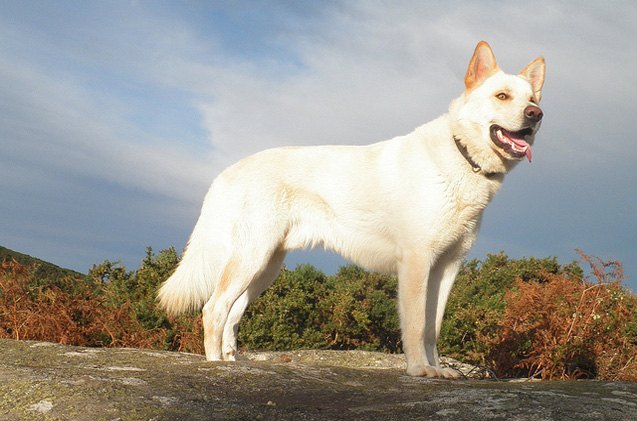
Image Credit- Getty Images
Carea Leones
There aren’t many people that keep Carea Leonés as pets because the breed isn’t well recognized. He has a lot of skills, but one of his best uses is herding dogs. Therefore, it is accustomed to expansive environments where it can roam at will.
This is why it’s not ideal to have this dog in a small apartment and also why it hasn’t gained broad popularity. Nonetheless, there are many interesting things to learn about this animal, particularly for those who own farms or homes with gardens.
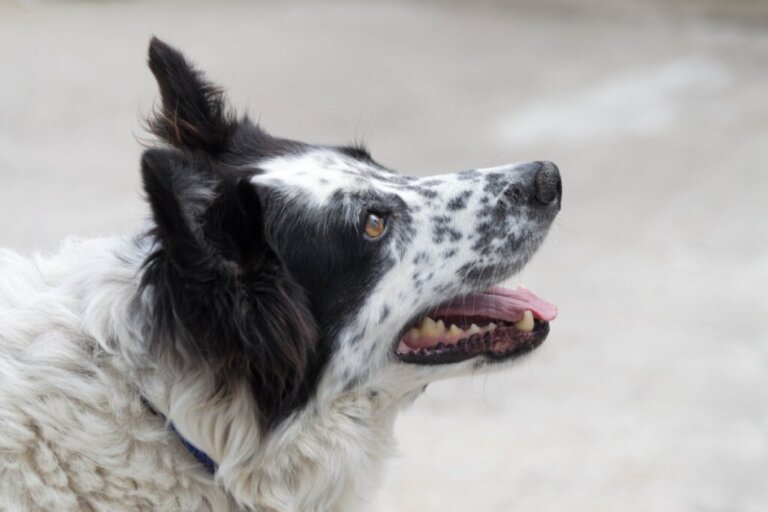
Image Credit- Getty Images
Galgos Espaol (Spanish Greyhound)
The Spanish Greyhound, or Galgo Espanol, is frequently misidentified as a true Greyhound. The athleticism and grace of these canines are quite comparable. However, their genetic backgrounds are distinct.
Galgos are more slender and longer than Greyhounds, which speaks to their stamina. The Spanish Pointers are well-liked hunting dogs. In rural Spain, they are popular for hunting and racing.
Galgos make chill, kind, and inquisitive pets. When they’re taking it easy, they don’t mind lounging in a soft location for very long, but they do enjoy getting out for a brisk stroll or even a jog every once in a while.
If a Galgo gets bored, he or she may decide to take matters into their own hands. So when they get the itch to roam, they can easily clear high fences.
They are available in many different hues. They might have short, silky coats or lengthy, rough ones.
:max_bytes(150000):strip_icc():format(webp)/FernandoTrabancoFotografa3-38e2a490fa444d42be1c9208aeb523f5.jpg)
Image Credit- Getty Images
Gos Rater Valencià
The Valencian Ratter, or Gos Rater Valencià, is another name for this species. The latter moniker helps define these canine companions: The Valencian hunting dog. In this regard, these active canines are reminiscent of the Jack Russell terriers of Spain. You could say they look like a Jack Russell and a Fox Terrier had a baby.
These miniature dogs were developed to eliminate rodent populations; they are small and compact but robust.
The Valencian Ratter’s egocentric character is reflected in their adoration of its own voice. These canines are not bashful about showing off their barking skills. While this makes them effective guard dogs, their constant barking can make them unpopular with neighbors in the modern function of companion animals.

Image Credit- Getty Images
Garafian Shepherd
La Palma, one of the Canary Islands, is home to one of the Spanish dog breeds known as the Pastor Garafiano. Although examples may be found all across the island, the name comes from the northern comarca of Garafa, where the breed was historically common.
Their origins shaped Pastor Garafiano’s attitude and character as working dogs. To herd and guard livestock, especially goats and sheep, was the primary application of their skills.
That’s why these canines could operate for many hours and in different conditions. It’s no surprise that the animal thrives in mountainous and rocky environments.
Because of their high IQ, they can learn new skills rapidly and with little difficulty. They are good and protective of kids, and they are very nice to their owners.

Image Credit- Getty Images
Ibizan Hound
More than three thousand years have passed in the long and distinguished history of these small, graceful hounds. And their origins can be traced back to ancient Egypt.
The Ibizan Hound was originally imported to the islands off the coast of Spain to hunt rabbits. They were the ideal candidates for the role due to their slim, athletic build and quick reflexes.
This breed of dog originated in Spain and is known for its lightning-fast speed and boundless, springy leaping ability. Ibizan Hounds are reported to be capable of a standing vertical leap of 5 or 6 feet.
In order to maintain their high level of athleticism, these dogs require regular vigorous exercise. When they get the chance, they’ll go for a run once or twice a day. And domestically, their amiability and loyalty make them sought-after pets.
They have little grooming requirements and come in both smooth and wire coat varieties. Their coats may be kept clean and healthy with regular brushing and bathing.

Image Credit- Getty Images
Majorca Ratter
Like other terriers, the Majorca Ratter shares certain commonalities in appearance and personality. The little yet energetic breed is the product of centuries of inbreeding among dogs brought to Majorca in the nineteenth century. They were originally bred as working dogs to control rodent populations by hunting pests.
This interesting breed, which resembles a Min Pin but has the personality of a terrier, has recently become a popular choice for a family pet. They are lively dogs that thrive on mental and physical stimulation, and in return, they provide their owners with unconditional love.
Despite being a free spirit, the Majorca Ratter will follow the lead of its owner. The answer is to utilize reward-based training methods, which reinforce positive behaviors and make the dog eager to repeat them.
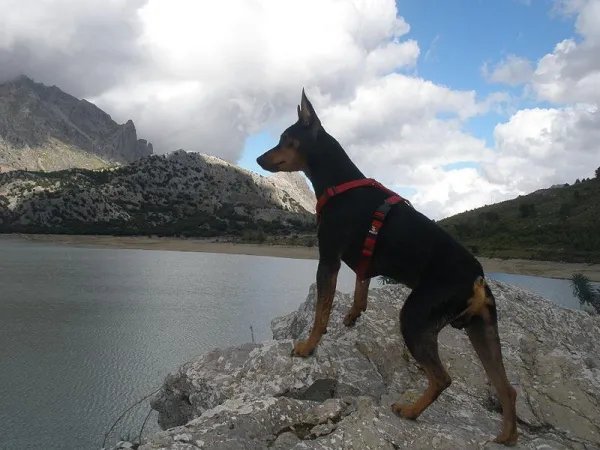
Image Credit- Getty Images
Majorca Shepherd Dog
This enormous dog with a distinct appearance is a remarkable creature endowed with tremendous loyalty and extraordinary bravery. This man has a powerful personality that needs to be completely tamed.
Due to his inability to show affection for more than one person at a time, he is the perfect pet for those who live alone. Only one master can have his whole loyalty.
You need to think about his fighting spirit and protective nature before you get one. Because once a dog has been won over, he will not want to separate from his master and will be loyal to him for life; the master must be willing to engage in a firm and constant education and must know the dog he will be living with.
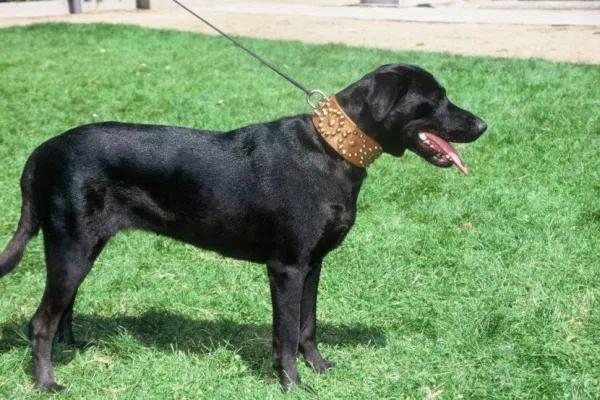
Image Credit- Getty Images
Majorero
The Bardino Majorero can trace its ancestry back to Spanish cattle dogs that arrived in the Canary Islands when Spain annexed the region in the 1400s.
The noble Bardino Majorero breed gained its independence early on in its history when it was used to protect animals. These dogs can be sweet and loving with their families but can be hostile to outsiders. Such behaviors can be avoided, but only with extensive early socialization of this breed.
Although this breed is good with kids, it’s best suited for slightly older kids due to its size, and all interactions should be well monitored. This dog should not be kept in an apartment or condo with a small yard.
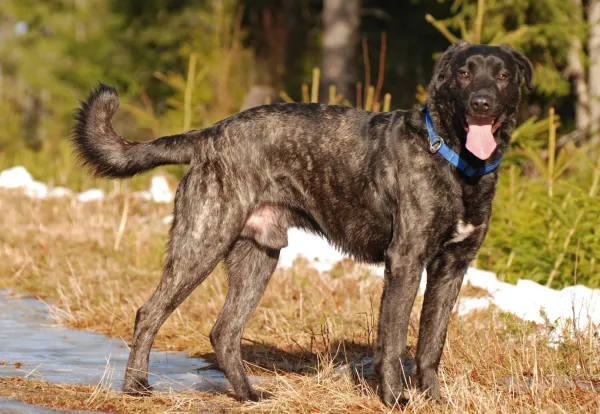
Image Credit- Getty Images
Pachón Navarro
The split or double snout is a prominent characteristic of this breed. This once made them desirable for use in hunting expeditions because of their supposedly enhanced sense of smell. Yet, in modern times, this characteristic serves merely aesthetic purposes.
In contrast, the Pachon Navarro was highly regarded as a hunting companion in the 18th and 19th centuries, when the hunting industry flourished. There was a sharp and dramatic decrease in Navarro’s popularity after the Spanish Civil War.
Spanish dog revivalists have been working to revive the floppy-eared dogs known for their unique snout. They are still relatively rare dog breeds, but their scarcity is part of what makes them so desirable.
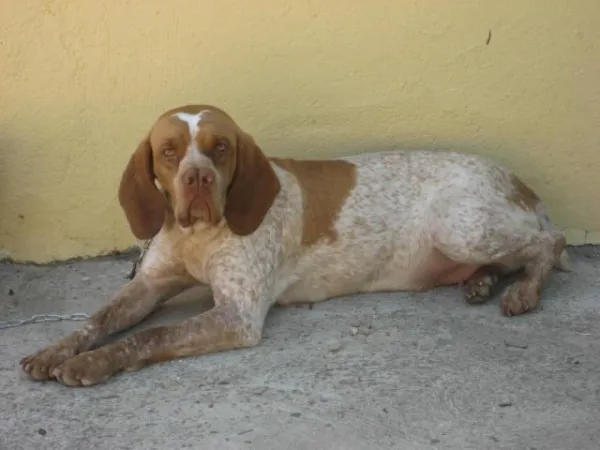
Image Credit- Getty Images
Perdiguero de Burgos (Spanish Pointer)
The Burgos Pointer or Burgalese Pointer is another common name for the Spanish Pointer. Originally from the Castilian Plateau, this Spanish breed was created there to hunt rabbits and foxes.
Historically, the Spanish Pointer may be traced back to the early 1600s. In addition, they probably contributed to the creation of the several different pointer breeds that exist today.
Hunters on deer hunts traditionally used this massive pointer. Additionally, they are another well-liked type of Spanish hunting dog.
These days, quail and partridge are the typical prey for hunters that employ these canines as gun dogs.
These dogs have a reputation for being gentle, respectful, and smart. In general, pointing dogs share
these characteristics. Image Credit- Getty Images
Podenco Canario
The Canary Islands are the birthplace of the Podencos Canarios, commonly known as the Canary Warren Hounds. Gran Canaria and Tenerife enjoy a devoted following, but outside of those two islands, you’ll be hard-pressed to find them.
Dogs of the Podencos Canarios breed are energetic, diligent, and watchful creatures. Due to their tremendous levels of energy and stamina, they make for devoted hunting partners and loving pets.
The Podenco Canarios people adapted their cat-like feet through time so they could better hunt in the harsh, volcanic landscape. When they spot a rabbit, they let out a brief, repeating bark that has been dubbed their “rabbit song.”
For the first time in 2006, the Podenco Canario was officially recognized by the United Kennel Club.
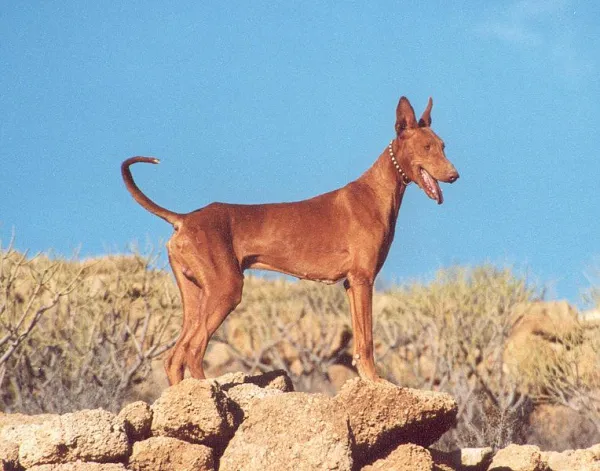
Image Credit- Getty Images
Podenco Maneto
The large torso and tiny legs of this miniature hunting dog remind one of a dachshund. The Podenco Maneto, on the other hand, has erect, sharp ears and a short, smooth coat that can be either white or red.
The ancestry of this breed remains a mystery to us. However, it is commonly thought that they hail from Andalusia.
Together with their pack of hunting hounds, hunters would utilize the Podenco Maneto to track down their quarry. Due to their tiny legs, this Spanish dog breed is not very quick. On the other hand, they can navigate through areas that most canines would find impossible to traverse, such as thick undergrowth and tight valleys.
These canines have a well-deserved reputation for being calm and thorough in their duties. They’ll bark to call in the rest of the hunting pack when they sniff out their prey.
These small dogs pack a big personality and are effective hunters and wonderful pets. The breed is known for being devoted and loving with its human companions. They’ll curl up at your feet if you give them a chance; they’re content just to be near you.
They are smart, self-reliant, and headstrong. Therefore, proprietors should take a rigorous approach to train. They learn quickly and eagerly through positive reinforcement, as do most dogs.
:max_bytes(150000):strip_icc():format(webp)/SusiwusiPixaby-28943315f2814ec891f5eb644d29beff.jpg)
Image Credit- Susiwusi / Pixaby
Papillon (Phalene)
Despite the fact that Spain is not alone in claiming this species, it is deserving of inclusion here due to its long history and current popularity in the country. It’s not just the French who have laid claim to them; the Belgians have done the same.
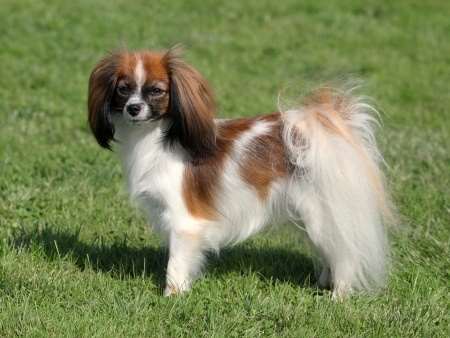
Image Credit- Getty Images
While the history of the Spanish dog breed is shorter than that of some of the others on this list, it still dates back more than 500 years. They have been the devoted friends of European aristocratic women for generations. That’s why they’re still among the best pairs around.
You shouldn’t get yourself all mixed up. The Papillon and the Phalene are actually just two variations of the same breed, distinguished only by their ears.
The Papillon gets its name from the way its upright ears and frilly facial fur evoke a butterfly’s shape (Papillon is the French word for butterfly). The Phalene (French meaning “moth”) is similar but with droopier ears.
Presa Canario
This dog has little similarity to the tiny and endearing canary, despite its name. The Canary Islands are the actual source of the name. They are originally from the Canary Islands, specifically Tenerife and Gran Canaria.
The Canary Mastiff, also known as a Presa Canario, was originally developed to protect livestock and later took on the additional role of herding. This breed was developed by intentional breeding operations that mated different types of Mastiffs with native Canary Island cattle dogs.
The end consequence was a massive canine that provided residents with useful protection and herding skills. They are easily distinguished from other animals by their large size and abundance of skin. The truth is that their saggy skin tends to gather increases, giving them a slack and sloppy appearance.
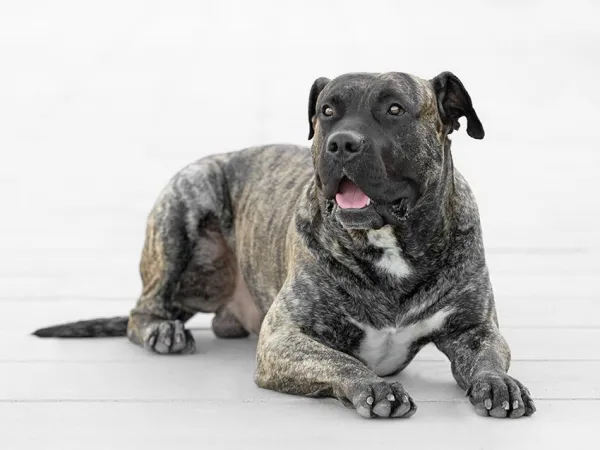
Image Credit- Getty Images
Ratonero Bodeguero Andaluz
The name of these Spanish dog breeds makes it obvious. This breed of dog was developed in the rural wineries of Andalusia, Spain, where he was originally used for hunting rats and mice, but he is today highly valued for his athleticism and his lively temperament and attitude.
Some people have even suggested rebranding this dog as the Spanish Jack Russell because of its superficial resemblance to the Jack Russell Terrier. Neither of these dog breeds’ similarities to the Fox Terrier is coincidental. Where they were raised makes all the difference.
The Andalusian Rat Terrier almost certainly made its way to Jerez, Spain, from the United Kingdom. They became well-liked because of their svelte build and proven capacity to eliminate rodents from wine storage areas, thereby preserving the high standards for which the beverage is known.
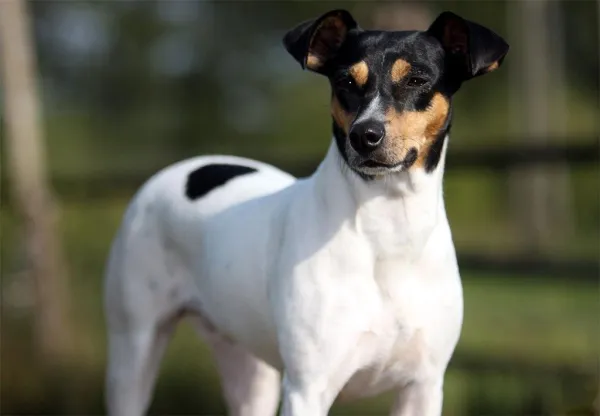
Image Credit- Getty Images
Spanish hound
This scenthound was developed to hunt wild boar, hare, bear, deer, fox, and other species in the hilly regions of the far northern Iberian peninsula. It wasn’t until the 14th century that King Alphonse XI provided its first written description.
The wild boar hunting in the north and the rabbit hunting in the south are two of the many uses for this dog’s ancestry as a gundog. This breed is known for its calm demeanor and friendly nature, making it a great pet for anybody.
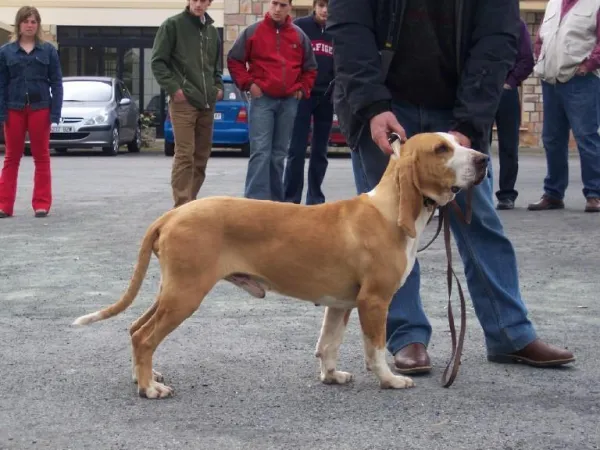
Image Credit- Getty Images
The Pyrenees
The Great Pyrenees, as its name suggests, is a large breed of dog originally from the Pyrenees Mountains, forming the border between France and Spain. The popularity of these dogs cannot be disputed, even though the claim that they are actually French can.
These large, 100-pound canines have been used for ages to guard sheep in the mountains. Despite their placid demeanor and friendly nature, these canines were bred to scare away predators like wolves and bears.
There is no understating the greatness of the Great Pyrenees. Their bravery earned them a place in folklore among the mountain farmers who raised them. They’ve made the change from fearless guardians to doting family pets without a hitch.
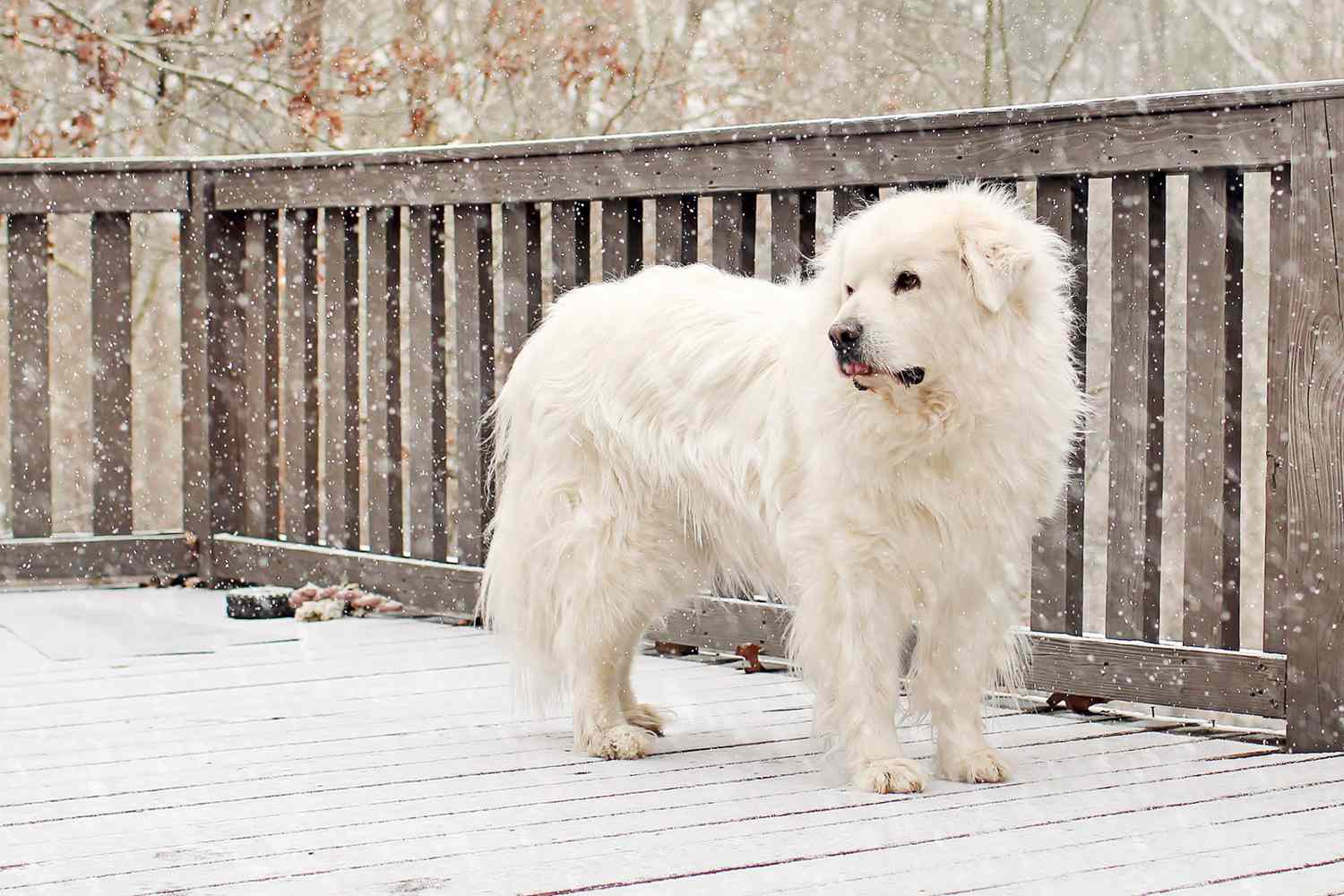
Image Credit : Anita Cline, My Three Sons Images / Getty
The Spanish Mastiff
The Spanish Mastiff is one of the massively strong Spanish dog breeds, which may reach a shoulder height of 28 to 35 inches. They look drowsy and dignified because of their large heads and sagging skin.
You can hear their low, resonant bark from a great distance.
This dog breed originates in Spain and is known for its strength, kindness, and loyalty. Their power made them desirable for guarding the vulnerable.
Their laid-back temperament means they don’t need much exercise despite their size. However, the dog’s physical and mental health will benefit from daily outdoor play, walks, or hikes.
Their size, strength, and temperament made them ideal for their original purpose as guard dogs, which was to safeguard Marino sheep and the ranchers who cared for them.
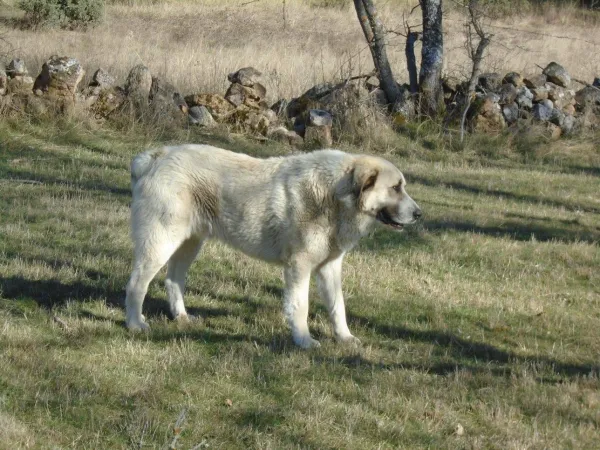
Image Credit- Getty Images
The Spanish Water Dog
The appearance of a Spanish Water Dog can’t be mistaken for anything else. The curly-coated Spanish medium-sized dog breed.
Because of this dog’s skills as a retriever, we’ve included it in our section on hunting dogs. However, this hardworking, multipurpose dog can also be used as a herding dog.
Besides being intelligent and diligent, these dogs are also rather playful. And they’ve been hanging out around the Iberian Peninsula’s lakes for centuries.
When fully matured, these canines make wonderful jogging companions for the energetic person. And it helps if their owners give them some time to go about and play each day.
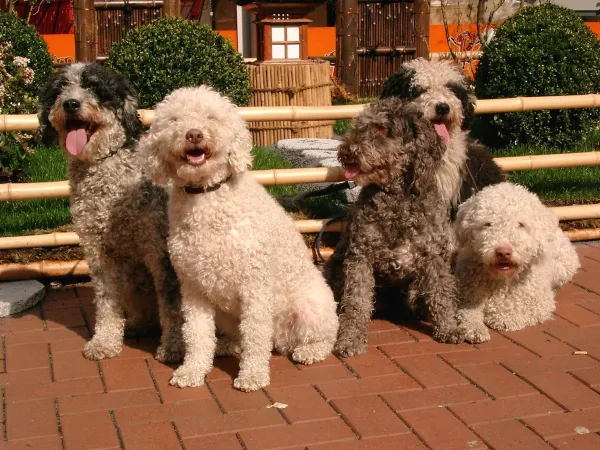
Image Credit- Getty Images
Valencian Podenco
The Royal Canine Society of Spain recently recognized the Podenco Valenciano, also known as the Xarnego Valenciano, as a distinct breed suitable for hunting. Although they hunt with their eyes, ears, and nose, this breed is rarely seen outside of the Valencian community of Spain.
Some people classify them as primitive hunting hounds, while others consider their sighthounds. In the early days of the breed’s existence, it was commonly owned by the working class and used to hunt rabbits (especially at night) so that families could have dinner. The dogs of this breed are hardy and robust, thriving even in the hottest of climes.
Last but not least, tales abound of the good temperament of these loyal and faithful hounds, in addition to their great hunting prowess and fantastic health.
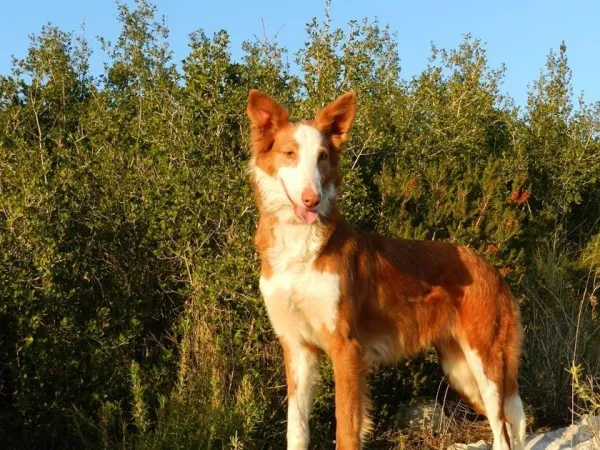
Image Credit- Getty Images
Villano De Las Encartaciones
Despite being classified as a medium-sized dog, the Villano de Las Encartaciones appear as muscular mastiffs due to their long legs. They have deep, robust chests and strong necks, making them sturdy, heavy-set dogs.
There’s a lot of history behind the Villano de las Encartaciones; they were bred specifically for a job. The dogs were bred to work, specifically as herders. Shepherding sheep, guarding the farm, and managing the herd were all part of their daily routine.
The Villano’s professional lives heavily influence their personalities. They’re intrepid, fearless, and fierce guardians. The Villano’s independence of thought under pressure makes them challenging to train.

Image Credit- Getty Images

